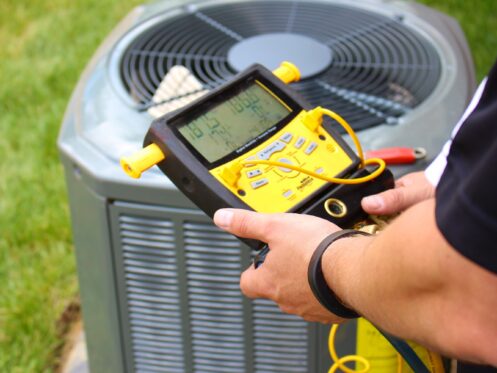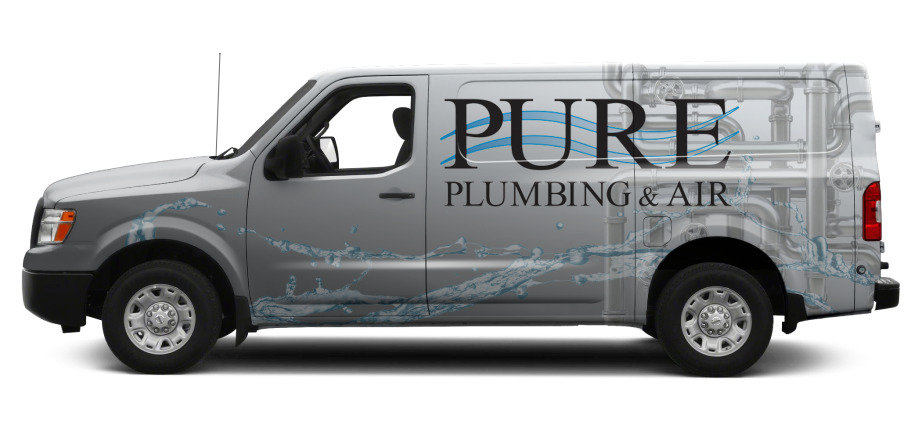The hot and dry climate is brutal on HVAC systems. You can’t afford to have a suboptimal unit, as the weather demands peak performance at all times. Any issue, no matter how small, isn’t just an inconvenience but a failure waiting to happen. Thus, it is crucial to ensure your system is always in pristine condition. Here’s a guide to the recommended maintenance frequency for HVAC systems in the desert climate.
Professional Maintenance Frequency
Under normal circumstances, servicing your HVAC system once a year is sufficient for maintaining efficiency. However, in hot and dry climates, you should schedule professional AC maintenance and heating tune-ups at least twice a year: once before summer sets in (spring tune-up) and again before winter (fall service).
Why Twice a Year?
The desert climate is characterized by extreme temperatures, low humidity, and persistent dust. The temperature can rise as high as 120 degrees Fahrenheit in summer and drop as low as 10 degrees in winter. The intense heat in hot months will force the cooling system to work harder and longer, even when operating at peak efficiency. This constant strain increases wear and tear, not to mention the excessive energy consumption from running continuously.
When a system that’s already overworked experiences any malfunction, even a minor one, it can quickly escalate into a major breakdown. A spring tune-up will help technicians identify potential weaknesses early and address them before they become problems.
The desert’s dust presents another major challenge. Dust can clog filters, coat coils, and accumulate inside vents and ducts, obstructing airflow. Clogged filters can lead to overheating, water leaks, and compressor failure. Coated coils will make it challenging to transfer heat effectively, forcing the system to work harder and consume more energy. Meanwhile, accumulated dust in the ducts can worsen indoor air quality, potentially triggering allergies or respiratory issues.
Low humidity or dry air can make a space feel colder—a problem common in winter. Your system will, again, have to work harder and longer to make your rooms comfortable. During a service call, a technician can recommend ways to mitigate the effects of low humidity to optimize your heating system’s performance in the cold months.
Spring Maintenance Checklist
Spring tune-up entails preparing your cooling system for summer. A technician will perform tasks such as:
Filter Replacement
Replacing or cleaning HVAC filters in spring is crucial for maintaining proper airflow and ensuring efficient filtration of airborne particles. You’ll avoid issues such as hot and cold spots, weird sounds, bad odors, high energy bills, and compressor failure by getting the right filter replacement for your system.
While this is a task you can perform on your own, it is highly recommended to consult with a technician. Getting aspects such as size, type, MERV rating, and placement wrong can lead to potential damage to your cooling system.
Coil Cleaning
Most cooling systems have indoor and outdoor coils. The indoor coils (evaporator coils) extract heat from the indoor air to make it cooler. The outdoor coils (condenser coils) release the heat that was extracted from the indoor air to the surroundings.
Over time, dust, dirt, and debris accumulate on the coils, forming an insulating layer that reduces the heat transfer efficiency. To put it simply, dirty evaporator coils struggle to absorb heat from indoor air, while clogged condenser coils make it harder for the system to expel heat.
Technicians must clean these coils to maintain optimal system performance. Since this task requires specialized tools and skills, you must call a qualified professional to do it. DIY risks your safety and the integrity of your cooling system.
Refrigerant Level Check
As mentioned earlier, the indoor coils absorb heat from the indoor air, which is discarded via the outdoor coils. This process is facilitated by refrigerant, the lifeblood of your cooling system. It absorbs heat from the indoor air and then travels to the condenser coils to expel it outside.
Unfortunately, refrigerants are prone to leaks. Corrosion in the coils, wear and tear, improper installation, and factory defects can contribute to refrigerant loss. Low refrigerant levels will reduce the cooling efficiency of your system. Moreover, being highly toxic, you risk health issues such as dizziness, nausea, headaches, or severe respiratory and neurological problems if exposed.
Technicians will not only confirm that your refrigerant levels are at their optimal point but also actively search for potential points of leaks to prevent future loss. If your system is old and uses a phased-out refrigerant, they’ll help you find the appropriate replacement if you have leaks.
Thermostat Calibration
The thermostat is the brain of your cooling system. It reads your home temperature and tells your system when to turn on or off to maintain the desired comfort level. If faulty or improperly calibrated, it can lead to inconsistent temperatures, excessive energy consumption, and unnecessary strain on the system.
During a spring tune-up, technicians will clean the thermostat’s sensors, recalibrate it if needed, and verify its accuracy through various tests. They may also recommend proper thermostat placement if its current location is no longer optimal for accurately sensing the overall indoor temperature, perhaps due to new furniture, renovations, or the presence of a new heat source or draft.
Electrical Components Check
Electrical connections are vital for the safe and efficient operation of your cooling system. Loose, damaged, or corroded wires can disrupt power flow, interfere with communication between the thermostat and the unit, and even pose a fire hazard.
During a maintenance visit, technicians will tighten connections, inspect wires for signs of wear, and test voltage levels to ensure proper operation. They will also check capacitors, relays, and circuit boards for any defects that could compromise system performance.
Fall Service
Fall service serves two essential purposes: assessing the wear and tear accumulated on the cooling system during the intense summer months and preparing the heating system for the cold, dry desert winters. If there is any damage to your cooling system, professionals will recommend tailored solutions.
Heating maintenance tasks will depend on the type of system you use. The key areas of attention include the following:
Furnace and Boiler Maintenance
If you have a gas furnace or a boiler, call a technician to check and test the ignition system for proper functioning. This component is critical as it initiates the combustion process that heats up your indoor air. If faulty, it can pose risks such as potential gas buildup and explosions, carbon monoxide leaks, and fires.
The technicians will also check the burners, heat exchangers, and safety controls to ensure efficient operation. Additionally, they’ll inspect the ductwork for leaks or obstructions, which can affect airflow and overall heating performance in your home.
Heat Pumps
Heat pumps share many components with air conditioners, operating on a similar principle. They use refrigerant to extract heat from the outdoor environment and transfer it indoors during colder months while reversing the process to cool the space in warmer months. Think of it as an AC engineered to provide warmth when needed.
Hence, heat pump routine maintenance tasks resemble those of AC. They include refrigerant level checks, coil cleaning, filter replacements, lubrication of moving parts, and condensation drain cleaning.
Contact Pure Plumbing & Air for More Information
While fall and spring are the recommended maintenance seasons, you can call for a complete HVAC system tune-up any time of the year. Our trained, licensed, insured, and bonded technicians are available any day of the week to provide expert service tailored to your needs. We also offer repair and replacement services to ensure your HVAC system operates at peak efficiency year-round.
Call Pure Plumbing & Air today for HVAC maintenance in Las Vegas.


